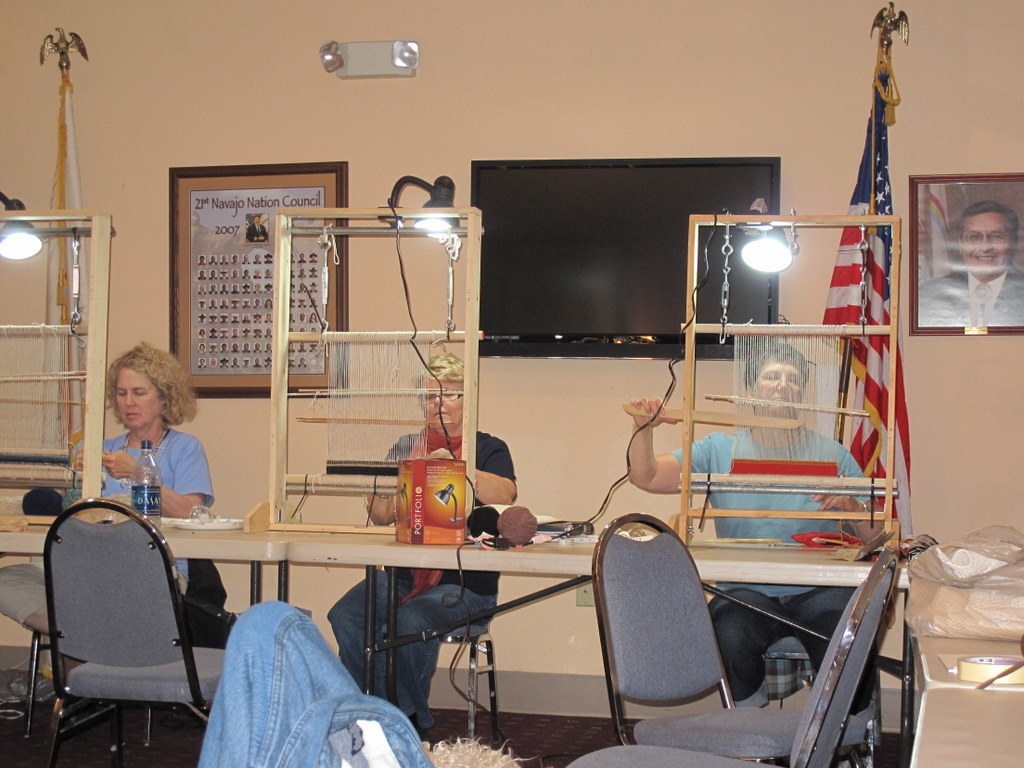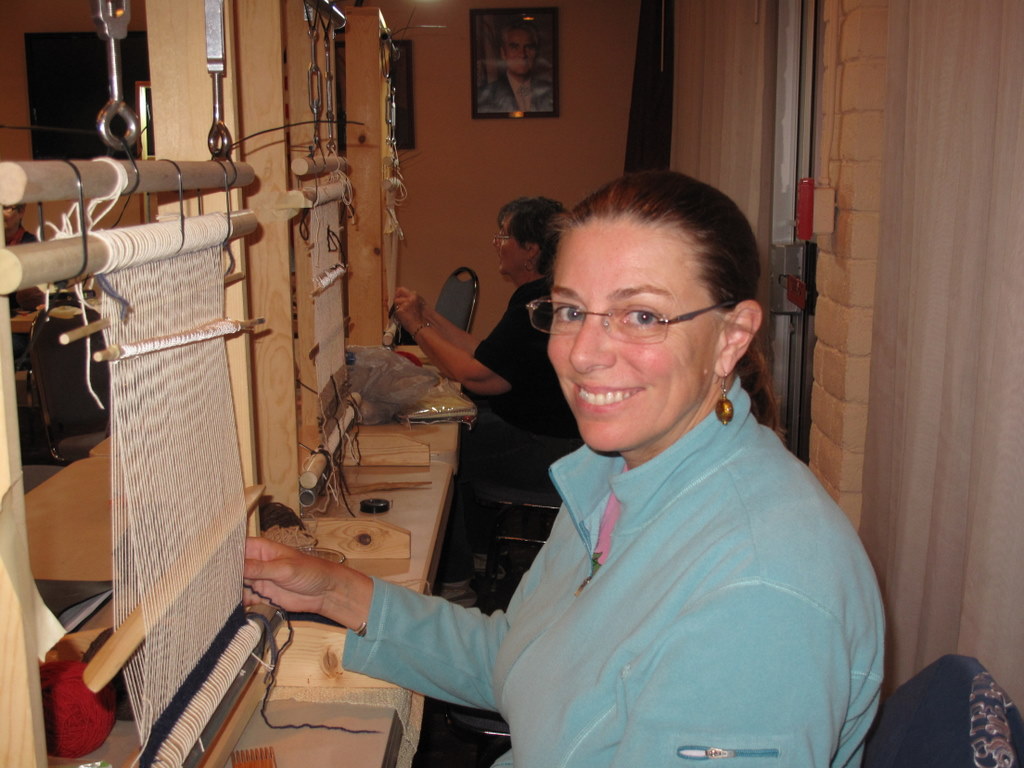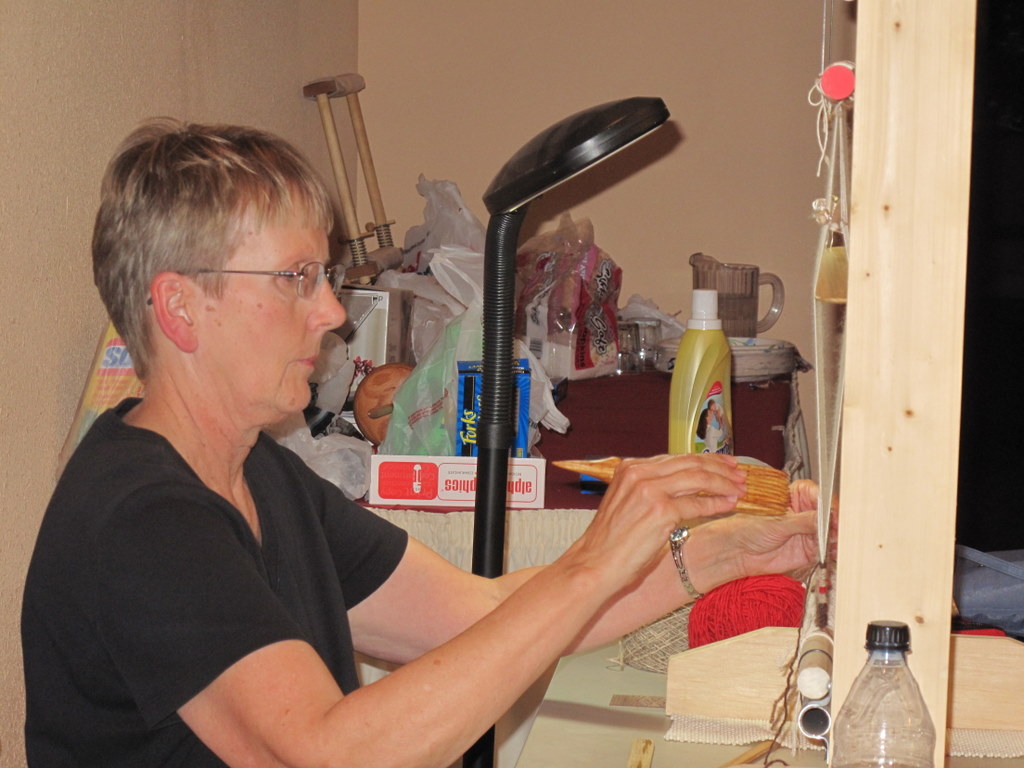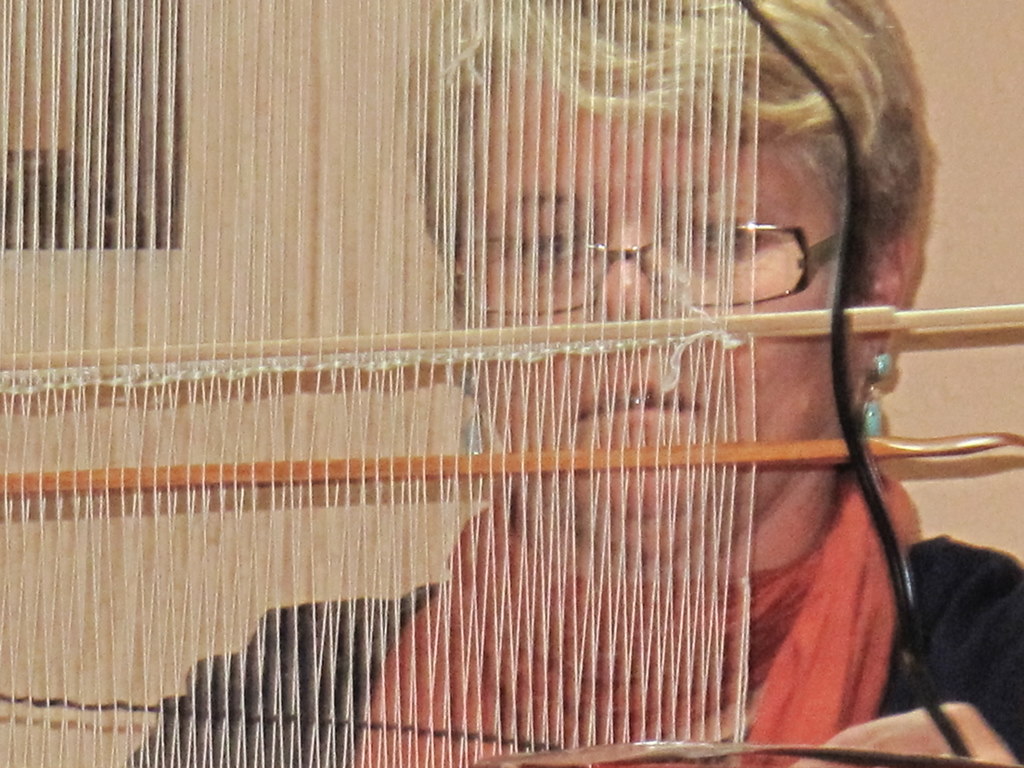Weaving in Beauty October 2009: Starting to Weave

The night shift: from left, Ann Hornby, Cheryl Griffin and Linda Mansour break out the clip-on lamps
Tempe, AZ Navajo visitors to our classroom often ask the students if they have done their own warps and are surprised to learn that they have. If our class were running in the traditional Navajo way of teaching weaving, Jennie and I would have done the warps before the class started we would have begun to weave immediately. That’s because Navajo weavers consider it a waste of time to teach someone how to do a warp before you know they’re going to be a decent weaver. It makes sense as long as you live with a day’s walk of each other. Occasionally, a Navajo student comes into the Fiber Factory in Mesa so get some help with a warp because they don’t want to wait until they get a chance to get help from home. Weaving, it seems, helps to drive away the evil spirits of homesickness.
Having done our warps the day before, we got started with weaving on the second day of class. Several of the students hadn’t woven at all before, but were expert quilters. Others were accomplished loom weavers and others were returning to the fiber arts after long periods away. Irene Bailey (seen below) was one of the quilt artists trying weaving for the first time and she caught on very quickly. A meticulous craftsperson, Irene maintained very straight edges, which is no mean feat in a first rug. My daughter used to say that some rugs by first time weavers look like they’ve gone to Jenny Craig because they tend to be quite a bit thinner in the middle and they are on the ends. Jennie watches people carefully and if you’ve been in her classes, you may remember her saying “don’t have your wool so straight”, a gentle reminder to bubble or rock enough yarn into the shed to prevent the warps from easing together.
Alison Banks (below) was also a quilter and trying weaving for the first time. Alison was attending the class with her best friend from childhood, Pamela Ober. Pam had turned in for the night by the time I got the camera out, but you can see that she got a good start on her weaving before she headed for bed that night. You can see Sue Wright in the background down the table from Alison. Sue is returning to weaving after a career in education.

Alison Banks, also a quilt artist works on the start of her piece. Sue Wright can be seen in the background.
We also had two students who returned to take a second class with us. Ann Hornby (seen on the left in the picture at top) was doing her third weaving, and Cheryl Griffin (seen below) was working on her second Navajo style piece, but is an avid floor loom weaver and dye artist. Who finished their pieces? Who took them home to finish? What colors did they use? What patterns did they weave? Check back with us in the next few days and you’ll find out!
Hagoshíí (so long for now0
Mary Walker


